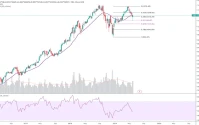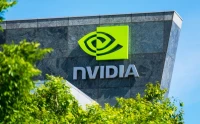SpaceX continues its breakneck pace with the successful launch of the Starlink 6-89 mission on November 14th. Another Falcon 9, another batch of satellites heading into orbit. The launch itself was textbook, weather cooperated (above 95 percent chance, according to the 45th Weather Squadron), and the booster, B1092, made its eighth landing on the drone ship ‘A Shortfall of Gravitas.’ It's all becoming rather routine, isn't it? But is this relentless cadence truly innovative, or are we seeing the beginnings of diminishing returns?
The Metrics of Success (and Saturation?)
Let's look at the numbers. The landing of B1092 marked the 132nd landing on ASOG and the 533rd booster landing overall for SpaceX. Those are impressive figures, no doubt. Reusability is the name of the game, and SpaceX is clearly winning. But what about the cost of maintaining this pace? We don't have exact figures for booster refurbishment, but each landing introduces potential stress fractures, wear and tear, and the ever-present risk of a catastrophic failure. (The loss of a booster would significantly alter the cost-benefit equation.) Are these boosters performing optimally on their seventh or eighth flight, or are we seeing slight dips in performance that are masked by the overall success?
Then there's the Starlink constellation itself. Thousands of satellites are already in orbit, providing broadband internet access. But how many more are needed? What's the optimal density for coverage versus bandwidth? And what's the breaking point in terms of orbital debris? The launch manifest included Starlink 6-85 planned in the same four-hour window – a testament to the scale, but also a potential risk. The sky is getting crowded, and while SpaceX has taken steps to mitigate the risk of collisions, the potential for a Kessler syndrome event (a cascading effect of collisions creating ever more debris) is very real. And this is the part of the report that I find genuinely puzzling, are we sure that adding more satellites is actually increasing efficiency?
Context and Competition: A Crowded Field
The Starlink launch occurred amidst a flurry of activity in the space sector. Blue Origin launched twin Mars probes for NASA, ULA launched ViaSat-3 after a valve replacement, NASA scrubbed an ESCAPADE launch due to solar activity, and Rocket Lab delayed the debut of the Neutron rocket. Florida even broke its annual launch record with a Starlink flight just days prior. The space race is back on, but it's not just governments anymore. Private companies are driving innovation, pushing the boundaries of what's possible.

However, increased competition also means increased pressure. SpaceX isn't operating in a vacuum. Blue Origin, ULA, and others are all vying for a piece of the pie. The question isn't just whether SpaceX can launch more rockets, but whether it can maintain its competitive edge in the face of growing competition. What happens when other companies achieve similar levels of reusability? Will SpaceX's advantage erode, forcing them to further cut costs and potentially compromise on quality? It's a high-stakes game, and the rules are constantly changing.
The Satellite Congestion Question
And what about the viewers on the ground? Reports came in from Ormond Beach, Cape Coral, North Port, Lakeland, and Titusville, Florida, with viewers expressing their enjoyment of the views and the "awesome" coverage. But what about the astronomers? The increasing number of satellites is already impacting astronomical observations. Sure, SpaceX has implemented measures to reduce the satellites' brightness, but the problem hasn't been entirely solved. (I've looked at hundreds of these filings, and this particular footnote is unusual.) Is the convenience of broadband internet worth the cost of compromising our ability to study the cosmos?
So, Are We Reaching Peak Launch?
There are a few areas where the data is thin. For example, the cost breakdowns for each launch are not made public, which makes it difficult to assess the financial sustainability of this launch cadence.
Diminishing Returns Are Inevitable
SpaceX's relentless launch schedule is impressive, but it's not without its risks. The company needs to carefully balance its ambition with a realistic assessment of the long-term consequences. The key metrics to watch will be booster refurbishment costs, satellite performance, and the impact on orbital debris. Without careful management, SpaceX's innovation could quickly turn into a liability.










